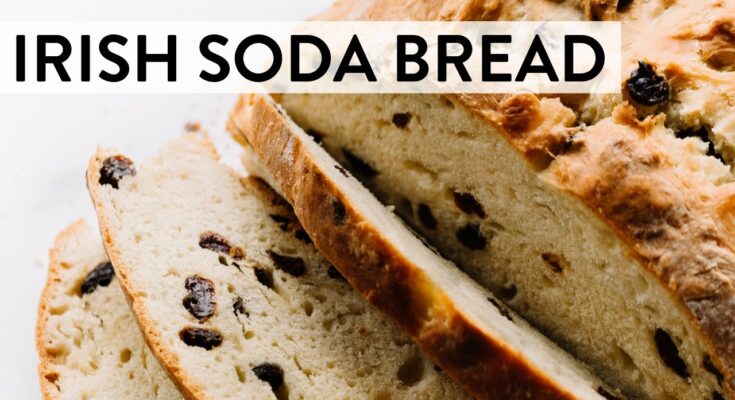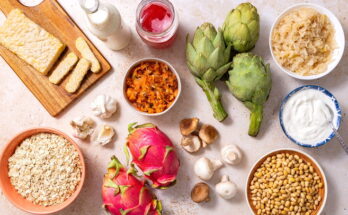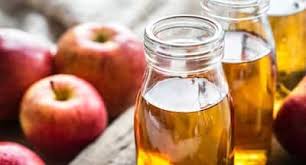Irish Soda Bread Recipe: Irish soda bread is a simple yet iconic bread that has stood the test of time. Known for its unique flavor, quick preparation, and rustic charm, it has become a staple in Irish households and a beloved treat worldwide.
The History of Irish Soda Bread
Dating back to the early 19th century, Irish soda bread became popular as an affordable and easy-to-make bread during tough economic times. It was a lifesaver for families needing a reliable source of sustenance.
Why is it Called Soda Bread?
The term “soda bread” comes from the use of baking soda (sodium bicarbonate) as a leavening agent instead of yeast. This ingredient reacts with the acidic buttermilk to create a fluffy and airy texture.
Unique Features of Soda Bread
Unlike traditional yeast-based breads, soda bread doesn’t require lengthy rising times. Its dense yet tender crumb and slightly tangy taste make it a versatile choice for meals or snacks.
Essential Ingredients for Irish Soda Bread
Traditional Ingredients
To make authentic Irish soda bread, you’ll need:
- 4 cups of all-purpose flour
- 1 teaspoon of baking soda
- 1 teaspoon of salt
- 1¾ cups of buttermilk
Variations and Substitutions
Want to customize your soda bread? Add raisins or currants for sweetness, or swap out buttermilk with yogurt or a milk-vinegar mixture as a substitute.
Kitchen Tools You’ll Need
Importance of Proper Tools
Having the right tools makes the process smooth and ensures great results. Soda bread is a forgiving recipe, but the right equipment matters.
Common Kitchen Tools for Soda Bread
- A large mixing bowl
- Wooden spoon for mixing
- Baking sheet or cast-iron skillet
- Parchment paper (optional)
- Sharp knife for scoring the dough
Preparing to Bake Irish Soda Bread
Preheating the Oven
Set your oven to 425°F (220°C). A hot oven is crucial for giving the bread its signature crust.
Preparing Your Baking Surface
Lightly flour a baking sheet or line it with parchment paper to prevent sticking. You can also use a cast-iron skillet for a more rustic touch.
Step-by-Step Instructions for Making Irish Soda Bread
Step 1: Combine the Dry Ingredients
In a large mixing bowl, sift together the flour, baking soda, and salt. This ensures the soda is evenly distributed and avoids clumps.
Step 2: Add the Wet Ingredients
Make a well in the center of the dry mixture and pour in the buttermilk. Stir gently until the ingredients are just combined.
Step 3: Mix the Dough Properly
Turn the dough onto a lightly floured surface and knead it lightly. Avoid overworking, as this can make the bread tough.
Step 4: Shape the Dough
Form the dough into a round loaf. Place it on the prepared baking sheet or skillet, then score a deep “X” on top with a sharp knife.
Step 5: Bake to Perfection
Bake for 35-45 minutes or until the bread is golden brown and sounds hollow when tapped on the bottom. Let it cool slightly before slicing.
Tips for Baking the Perfect Irish Soda Bread
Avoid Overmixing
Mix just enough to combine the ingredients. Overmixing activates the gluten, resulting in a dense loaf.
Achieving the Perfect Crust
Brush the loaf with buttermilk or sprinkle flour on top for a beautifully rustic crust.
Common Mistakes and How to Avoid Them
Incorrect Measurement of Ingredients
Precision is key in baking. Too much flour can make your bread dry, while too much buttermilk will make it too sticky to handle. Always use measuring cups or a kitchen scale for accuracy.
Overhandling the Dough
Soda bread dough is delicate. Overkneading or excessive mixing can lead to a tough, dense texture. Handle it gently and aim for a rough, shaggy dough.
Serving Suggestions for Irish Soda Bread
Traditional Accompaniments
Irish soda bread pairs beautifully with butter and jam. For a heartier meal, serve it alongside soups or stews like Irish lamb stew or potato leek soup.
Creative Serving Ideas
Turn soda bread into a breakfast delight by toasting slices and spreading them with cream cheese and smoked salmon. You can also use it to make sandwiches or croutons for salads.
Storing and Reheating Irish Soda Bread
Proper Storage Methods
Wrap your cooled loaf in a clean tea towel to maintain its crust while keeping the inside moist. For longer storage, use an airtight container or freeze the bread for up to three months.
Best Ways to Reheat Soda Bread
For fresh-from-the-oven taste, warm slices in a preheated oven at 350°F (175°C) for 5-10 minutes. You can also toast individual slices for a crispy edge.
Nutritional Information of Irish Soda Bread
Calories and Macronutrients
A typical slice of Irish soda bread contains approximately:
- Calories: 200
- Carbohydrates: 38g
- Protein: 6g
- Fat: 2g
Health Benefits of Soda Bread
The simple ingredients make soda bread a healthier alternative to processed bread. It’s free from preservatives and can be enriched with wholemeal flour for added fiber.
FAQs about Irish Soda Bread Recipe
Can I Make Irish Soda Bread Gluten-Free?
Yes! Substitute regular flour with gluten-free all-purpose flour. Ensure the baking soda and other ingredients are certified gluten-free.
How Long Does Irish Soda Bread Last?
Soda bread is best enjoyed fresh but can last 2-3 days at room temperature when wrapped well. Freezing extends its shelf life up to three months.
What Makes Soda Bread Different From Regular Bread?
Unlike yeast-based bread, soda bread uses baking soda as a leavening agent. This results in a quicker preparation time and a denser texture.
Can I Add Sweet or Savory Ingredients?
Absolutely! Sweeten the bread with dried fruits like raisins or cranberries, or go savory with additions like cheese, herbs, or seeds.
Is Soda Bread Better Warm or Cold?
It’s delicious both ways! Warm soda bread is comforting, especially with butter, while cold slices are perfect for toasting.
Conclusion
Irish soda bread is a timeless classic that’s as simple as it is satisfying. Its quick preparation, minimal ingredients, and adaptability make it a must-try for both seasoned bakers and beginners. Whether you’re enjoying it with a hearty stew or as a quick breakfast, this traditional bread brings a touch of Ireland to your kitchen. Now that you have the recipe and all the tips, it’s time to don your apron and start baking!



